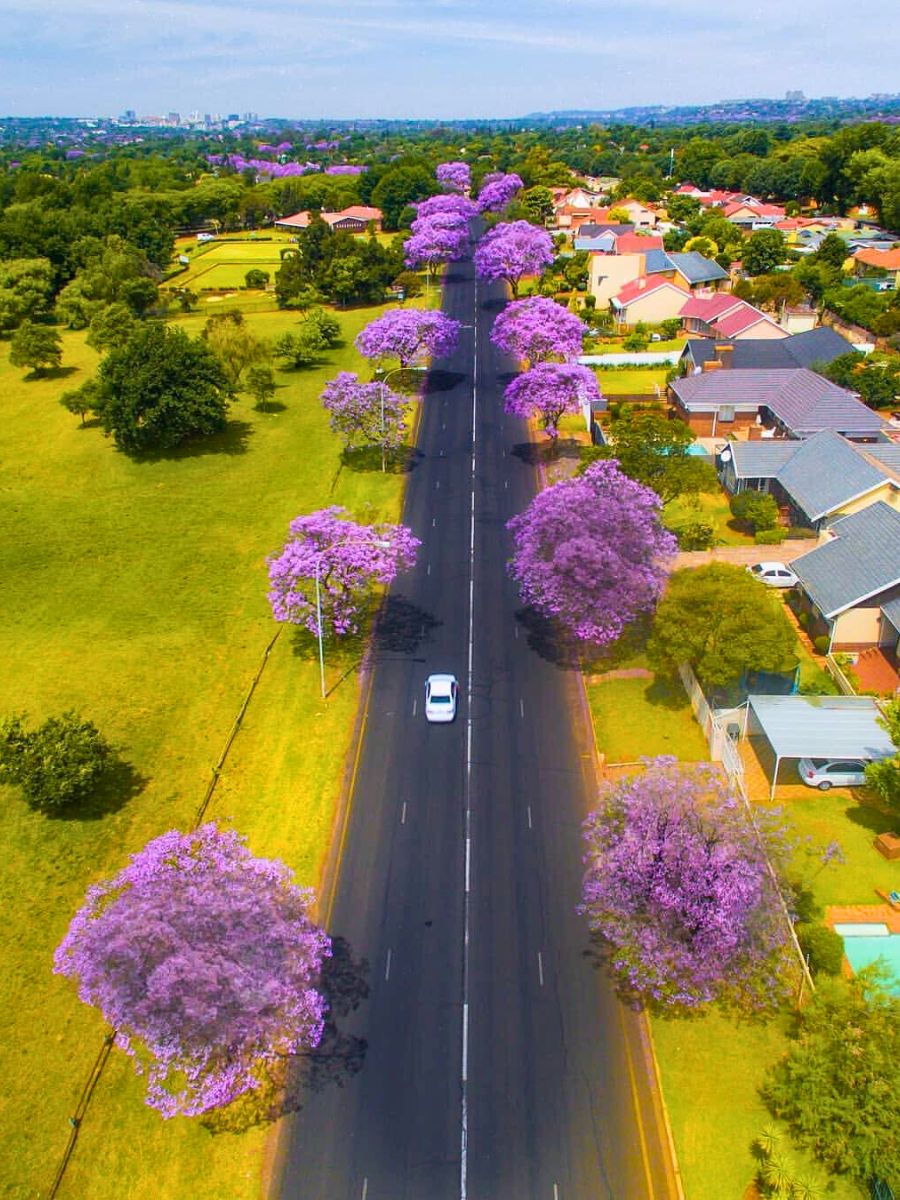Johannesburg city, often referred to as Joburg is the largest landlocked city in the world but boasts of planting millions of trees over the past decades. The past greening efforts are paying off, going by how green the city is at the moment.
It is a testament to the city's commitment to sustainability and carbon footprint reduction. Johannesburg takes pride in being among the cities that are at the forefront of urban greenery and fostering the critical issue of sustainability especially in urban environs.
Curious, how Joburg achieved its greenery, despite being a landlocked city? Read on.
History of Tree Planting in Johannesburg
Famously known as the city of gold, Joburg was initially not a green city and also had a savannah-like climate. The discovery of gold around 1886 in the city, compelled the Joburg to start thinking about environmental sustainability to mitigate the environmental challenges associated with mining. Due to this, mining companies developed a horticultural training center with the aim of doing extensive research on the best-adapted trees to grow for mine props at the time.

The research settled on blue gums and these were planted in Saxonwold, Parktown, Langlaagte, Craighall, and Fairlands, which had sufficient water presence. This initiative by the mining companies was the epitome of the city’s love for greenery and intensity towards the same. Today, the city has an impressive number of Jacaranda trees planted extensively, when they bloom in late September to mid-November, the beauty of the city comes to life.
Local residents love to refer to Johannesburg as Jozi, to signify their pride and love for their beautiful city. Jozi is a testament that indeed greenery and blooms bear nature's beauty and magic needed to create an accommodative and lively ambiance.
The Establishment of Johannesburg City Parks and Zoos (JPCZ)
Johannesburg City Parks and Zoos (JPCZ) established in 2001, played a pivotal role in the city's green blueprint. Their sole responsibility was to plant and manage trees across different open public spaces within Joburg City.
The establishment of this organization was intended to unite Joburg residents to contribute towards the beneficial course, of greening the city. Today, the organization not only oversees the plantation of trees across the city but also manages the city’s cemeteries, botanical gardens, nature reserves, and bird sanctuaries.

Though it was changed to a non-profit organization in 2013, the vision remains the same, to grow and maintain the sustainability and aesthetic appeal of the city. Today, the organization manages more than 20,000 ha of green open spaces, which has more than 3.2 million trees already planted. Its vision to have an environmentally sustainable and accommodative Joburg represents the passion of the city’s residents towards creating a beautiful yet liveable city by establishing a natural balance through respect to the environment.
Unwavering Love and Commitment to Greenery
Johannesburg’s love and commitment to greenery have been evident over the years. From its Million Trees Johannesburg initiative to city sustainability committees and urban forest management; shows their unwavering support and love for greenery and sustainability.
The city is constantly striving to combat the risks of climate change through the adoption of greening initiatives and the Million Trees Johannesburg is an example of this. The campaign saw the planting of more than a million trees across the city in the early 2000s. These efforts go beyond mere planting of trees and other greenery across the city, but also have strategies in place to take care of them to enhance their optimal growth.

There is no denying the aesthetic and health benefits of having trees and greenery in a city. Filled with noisy vehicles and other industrial activities, the cities often can be chaotic. However, the addition of greenery brings that nature’s touch and magic in the mix; the perfect contrast and the ingredient needed for harmony and balance.
Ecological Harmony and Balance
Sustainability is a debate we cannot afford to avoid now, greening up our urban spaces ought to be done today and not tomorrow. Johannesburg boasts of its greenery because of its decisions and commitment to green the city decades ago. The alarming rate of climate change and greenhouse gas emissions should be a wake-up call to make sustainability a top priority.

Cities around the world can borrow a leaf from the largest landlocked city in the world, Johannesburg. Through its greening efforts and strategies, cities around the world can transform the outlook of their city spaces, while creating ecological harmony and balance. Establishing harmony and balance is a possibility, Johannesburg’s trees or greenery are a result of human efforts to not only develop the largest urban forest globally but to pump life into their city.
Header image by SirNeel from Pixabay, feature image by @City of Joburg




